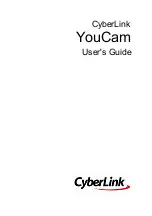
NETWORK Attribute
The NETWORK attribute specifies whether or not you are configuring an RDF network.
When set to OFF (the default value), an RDF takeover operation provides local database
consistency, but it cannot provide transaction consistency for network transactions that involved
several RDF backup databases.
When set to ON, the RDF subsystem provides database consistency for network transactions
that were replicated to other backup databases by other RDF subsystems.
When set to ON, you must either have the NETWORKMASTER attribute for the same system
also set to ON or have another system configured as the network master.
NETWORKMASTER Attribute
The NETWORKMASTER attribute specifies whether the particular system is the master of the
RDF network.
When set to OFF (the default value), the particular system is not the network master.
When set to ON, the particular system is the network master of the RDF network and this RDF
system coordinates takeover operations across all the RDF subsystems that make up the RDF
network. When this attribute is set to ON, the NETWORK attribute must also be set to ON.
UPDATEREXCEPTION Attribute
The UPDATEREXCEPTION attribute specifies the manner in which exception files are used.
When set to ON (the default value), the updaters log an exception record for each and every
audit record they must undo during a takeover.
When set to OFF, the updaters log exception records only for the first and last audit records that
must be undone (the minimum logging necessary to support Triple Contingency operation).
LOCKSTEPVOL Attribute
The LOCKSTEPVOL attribute specifies the primary system disk volume on which the RDF
lockstep file (
control-subvolume
.ZRDFLKSP) is to be located. The specified volume must be
configured to the Master Audit Trail (MAT), and either the entire volume or at least the lockstep
file must be protected by the RDF subsystem. For information about the RDF lockstep capability,
see
Chapter 15 (page 309)
.
REPLICATEPURGE Attribute
The REPLICATEPURGE attribute specifies whether Enscribe purge operations on the primary
system are to be replicated on the backup system.
When set to OFF (the default value), Enscribe purge operations are not replicated. You should
use the default (OFF) for all RDF configurations unless you have a specific need for replicating
Enscribe purge operations.
If you configure the RDF subsystem to replicate network transactions, you should not replicate
Enscribe purge operations because doing so might result in unexpected errors during the updater
network undo processing.
When set to ON, all Enscribe operations on RDF-replicated files are replicated on the backup
system. If you want specific Enscribe files purged, then you must also configure INCLUDEPURGE
and/or EXCLUDEPURGE clauses for each affected updater (see
“Updater Processes”
).
REMOTE MIRROR Attribute
The REMOTE MIRROR attribute specifies whether ZLT is enabled or disabled. The default is
off. For information about the ZLT capability, see
Chapter 17 (page 337)
.
Initializing and Configuring RDF
87
Summary of Contents for NonStop RDF
Page 68: ...68 ...
Page 186: ...186 ...
Page 260: ...260 ...
Page 278: ...278 ...
Page 284: ...284 ...
Page 290: ...290 ...
Page 308: ...308 ...
Page 322: ...322 ...
Page 336: ...336 ...
Page 348: ...348 ...
Page 464: ...464 ...
Page 478: ......
















































